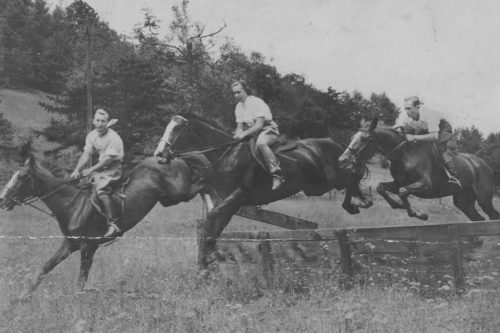
Blowing Rock History Walk
The Blowing Rock History Walk opened June 1, 2023! This downtown feature presents 21 History Stations. Each station offers images and narratives of events, people, and places in Blowing Rock history on a bronze relief plaque atop a handsome stone pillar. Each station also has a QR code linking to online “back stories” that amplify the narratives. The trail follows the sidewalk from Main Street down Laurel Lane. It then meanders through Broyhill Park, arguably one of the prettiest parks in NC. It is approximately ¼ mile in length and handicapped accessible. The trail is lined with welcoming benches through Broyhill Park. “We are excited to open this wonderful new trail during NC’s Year of the Trail,” said Tom O’Brien, then President of the Blowing Rock Historical Society. “The History Walk will be a significant venue for folks interested in heritage and culture, and will create a greater connection between Main Street and beautiful Broyhill Park.” The History Walk was funded and constructed by a public/private partnership among the Town of Blowing Rock, the Blowing Rock Historical Society, and the Village Foundation of Blowing Rock. In recognition of the opening of the History Walk, the Town of Blowing Rock has proclaimed that June 1 shall be “Blowing Rock History Day.” As a new cultural and educational attraction, the trail is a welcome addition to Blowing Rock’s many other attractions for residents and visitors alike. “Our history can be quite entertaining, and the history walk was carefully designed to tell engaging stories,” Tom adds. “We’re excited to share them!” More information, including the additional in-depth narratives, will be available on the Blowing Rock Historical Society’s website. For more information about the Blowing Rock History Walk, visit blowingrockhistoricalsociety.com.









